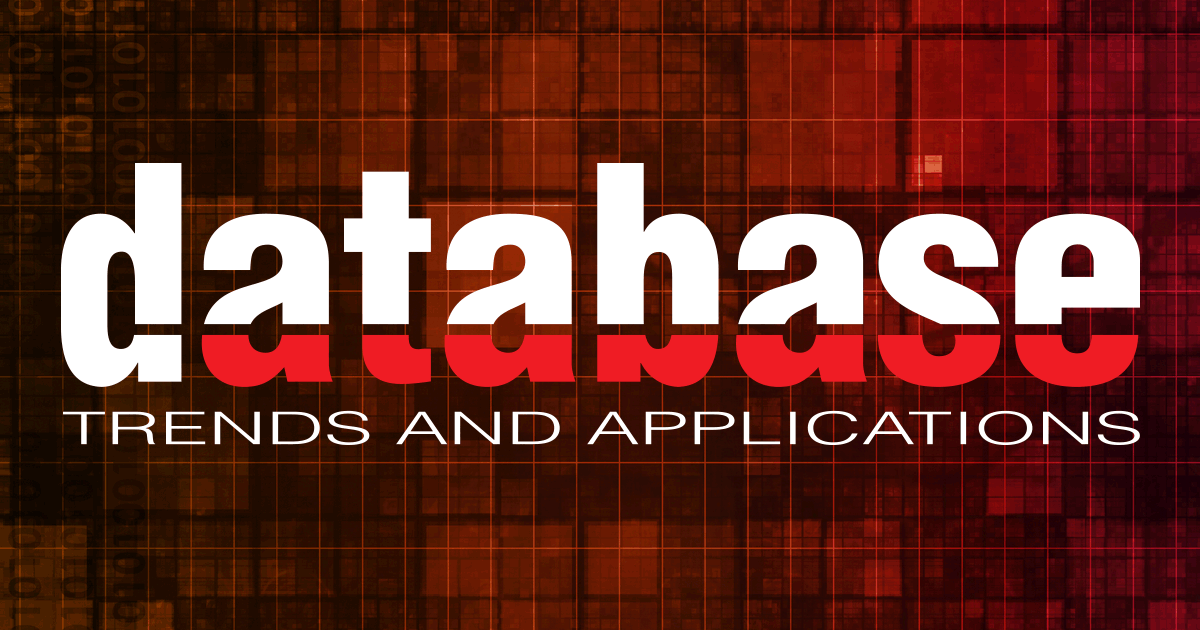
MMS • RSS
Posted on nosqlgooglealerts. Visit nosqlgooglealerts

In the age when data is everything to a business, managers and analysts alike are looking to emerging forms of databases to paint a clear picture of how data is delivering to their businesses. The challenge is an insatiable demand from businesses for AI capabilities, which rely on access to data that has be reliably vetted and relevant to the prompts or queries at hand. Graph databases and knowledge graphs—especially when combined—fulfill this role.
This is part of a rapidly unfolding movement in which “databases have evolved from merely storage layers for transactional data to having the capacity to store the data, including its own relationships with other entities,” said Gautami Nadkarni, senior customer engineer at Google Cloud. This “takes them from knowledge to wisdom.” Attaining this wisdom is where knowledge databases and graphs step in, she added, which play a crucial role in visualizing these data into forms that normal databases don’t have the capacity for.”
“More connected, context-rich data ecosystems are essential for scalable AI,” said Scott Gnau, VP of data platforms at InterSystems. “As the pressure grows to deliver more accurate, explainable, and dynamic AI solutions, organizations are rethinking how their data infrastructure supports that goal.”
The rise of interconnected data means businesses need to look past standard relational databases. “Having the ability to store it as interconnected graphs would be more powerful,” said Nadkarni. “The rise of large language models is creating a greater need for knowledge graphs to provide context, improve accuracy, and reduce hallucinations or false results,” she added. “Businesses need to make decisions faster and with the right data. Graph databases enable real-time analysis of relationships, which is essential for dynamic environments.”
With generative AI (GenAI) and retrieval-augmented generation becoming more mainstream, “there’s growing demand for technologies that deliver better context, meaning, and reasoning,” said Ishaan Biswas, director of product management at Aerospike. “Knowledge graphs running on high-performance graph databases are proving especially valuable here. They help build smarter recommendation and retrieval systems, significantly reducing hallucinations and improving AI responses.”
DIFFERENT ROLES
While joined at the hip, graph databases and knowledge databases serve two distinct purposes. Graph databases open up views of interconnected data to help users discover and analyze relationships between datapoints, be it in customer transactions or internal operations. Knowledge graphs provide the visible structure that supports decision making and analytics.
Both graph databases and knowledge graphs “have similarities but serve different purposes,” said Shalvi Singh, senior product manager at Amazon AI. “Graph databases serve as the underlying infrastructure layer specifically designed for the efficient management of connected data. They are optimized to handle complex queries and traversals. In contrast, knowledge graphs add a semantic reasoning layer, facilitating tailored domain recommendations or precise diagnostics in fields like healthcare.”
A graph database stores and manages data as nodes, or entities, and edges, or relationships, said Philip Miller, senior product marketing manager and AI strategist at Progress. This facilitates the exploration of complex, interconnected data. A knowledge graph, meanwhile, “is a specialized application built on top of a graph database that adds semantic meaning and business context through ontologies and formal relationships,” he added. “In essence, the graph database provides the infrastructure, while the knowledge graph brings structure, reasoning, and domain expertise.”
Often, “people confuse graph databases and knowledge graphs, but they’re complementary, not interchangeable,” noted Biswas. “A graph database is like a car’s engine—it stores and processes data connections efficiently, allowing for rapid data accessibility. A knowledge graph is like that car’s navigation system, providing context, meaning, and direction on top of those connections.”
The bottom line is that “graph databases are a type of NoSQL database that stores data as a network of interconnected nodes and edges,” Nadkarni explained. “They manage complex relationships between data.”
The real value comes when graph databases and knowledge graphs are integrated, said Gnau. “In a multi-model platform, graph and semantic modeling capabilities work together to provide both structure and meaning, enabling AI and large language models to deliver more accurate, relevant, and explainable insights.”
Combining both graph databases and knowledge graphs “enables you to derive maximum benefit with GenAI and large language model technologies,” said Biswas. “A high-performance graph database with a rich knowledge graph provides structured, accurate context. This potent combination greatly diminishes errors or hallucinations and makes AI outputs more reliable and accurate.”
Effective AI systems “will leverage both the semantic layer that knowledge graphs provide as well as the power of graph databases to model complex, real-world relationships within an organization’s data,” said Parker Erickson, senior AI solutions engineer at Snorkel AI. “Both empower AI to retrieve data in a deterministic and symbolic manner—improving explainability and accuracy of the system. Knowledge graphs will help inform AI systems about the rules that govern an organization’s world—all imports of a certain type of product and location are subject to a certain tariff. Graph databases are suited to look up what exact SKUs from what suppliers are then subjected to that tariff and could be used to run simulations on the optimal way to import more product based on the rules contained in the knowledge graph layer of the graph.”
Enabling both the semantic and data layers of graphs “allow AI systems to incorporate the what—specific datapoints—but also the why—the rules contained within the semantic layer—all curated by subject matter experts,” said Erickson.
ENTER AI
The combined power of graph databases with knowledge graphs can help enterprises boost AI efforts by delivering insights within their proper context. These environments enable AI tools to rapidly traverse and analyze complex data networks of information from across various systems and platforms; adjoining knowledge graphs can integrate these data sources into a semantic framework, providing meaning and context, said Gnau.
“Knowledge graphs are especially powerful,” Miller observed, when it comes to supporting AI and large language models. “They ground AI in real-world facts and relationships, reducing hallucinations and enabling more accurate, explainable results.”